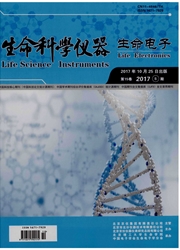

 中文摘要:
中文摘要:
目的:测量PCR温度的准确性和均一性。方法:PCR主程序:变性95℃,30s,退火55℃,40s,延伸72℃,50s,6个循环;热电偶分别放在孔内和管内。结果:每个循环以及每次测量的孔和管内的温度重复性很好;变性阶段,孔的温度和管内液体温度与程序温度偏差较大,温度准确性都较差,但所有孔的温度都达到通常需要的变性温度(变性90℃以上),但是44.4%的孔在90℃以上停留的时间不能达到设置的时间;变性阶段,11.1%管内液体不能达到所需的变性温度(90℃).结论:这些缺陷可能导致扩增结果假阳性或假阴性。
 英文摘要:
英文摘要:
Both temperature accuracy of wells at block and uniformity of well-to-well and hatch-to batch were tested on a standard PCR process. Method: The primary thermal cycling settings were, 6 cycles of 95℃(denaturation)for 30 s,55 ℃( annealing )for 40 s,72 ℃ ( extension )for 50 s. Two thermal couples were embedded in bottom of wells and tubes respectively. Results: The temperatures of not only wells but also liquids in tubes measured had good repeatability cycle-to-cycle and batch-to-batch respectively. Temperatures of wells and in-tube liquids had poor uniformity during denaturation and deviated far from the programmed temperature. Although all wells reach the required denatured temperature (over 90℃),There are 44.4% wells which can not retain at all programmed times above 90℃ during denaturation.11.1% in-tube liquids cannot reach the common reaction temperature(over 90℃). Conclusion: False positive or false negative may be induced because of these shortcomings.
 同期刊论文项目
同期刊论文项目
 同项目期刊论文
同项目期刊论文
 期刊信息
期刊信息
